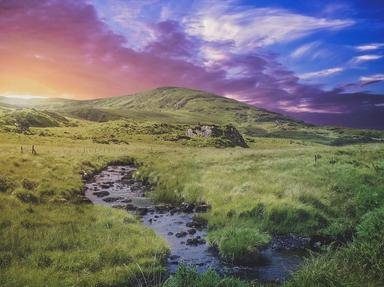Quiz Answer Key and Fun Facts
1. Of the nine counties that make up the province of Ulster, six of them make up Northern Ireland. Which of these Republic of Ireland counties, home of Trim Castle (pictured) is NOT also part of Ulster?
2. There are only four Irish rivers longer than 100 miles. Which of the following, pictured here entering the Irish Sea between Mornington, County Meath and Baltray, County Louth, is NOT one of those four?
3. Which county in south-eastern Ireland, whose county capital was Dungarvan until 2014, is called 'Port Láirge' in Gaelic?
4. The pictured cathedral is a popular place of pilgrimage on March 17, St Patrick's Day. It is here in one of Ireland's most historic towns that the remains of the country's patron saint were reputedly buried. To which county's seat would you travel to see Saint Patrick's grave?
5. 'Urbs Antiqua Fuit Studiisque Asperrima Belli' ("There was an ancient city very fierce in the skills of war") is the official motto for which west-coast Irish city that stands at the mouth of the River Shannon?
6. In which Irish province can you see three-time European Champions 'Les Bleus' play rugby union at the Aviva stadium, watch international ODI cricket at the Castle Avenue ground in the shadow of Clontarf Castle (pictured), or enjoy Premier League soccer at Longford Town's Strokestown Road stadium?
7. Although home to only 25,000 people, the town known in Gaelic as 'Inis Cluain Ramh Fhada' is still the 11th-largest in the Republic. Located on the Fergus River in the mid-West region of the country, it is the capital of which county?
8. Noted for its dramatic cliff scenery, Mizen Head (pictured) is one of Ireland's top tourist attractions. One of the extreme points of the island, in which county is it located?
9. Cork is the largest of the 32 Irish counties. Indeed, the seven largest are all in the Republic. Which county, with Omagh as its capital, is the largest of the six counties that comprise Northern Ireland?
10. Ireland has produced numerous world-class golfers. It is also home to many famous courses, including the venue for the 2006 Ryder Cup, the "K Club", which can be found in which county?
Source: Author
EnglishJedi
This quiz was reviewed by FunTrivia editor
spanishliz before going online.
Any errors found in FunTrivia content are routinely corrected through our feedback system.

